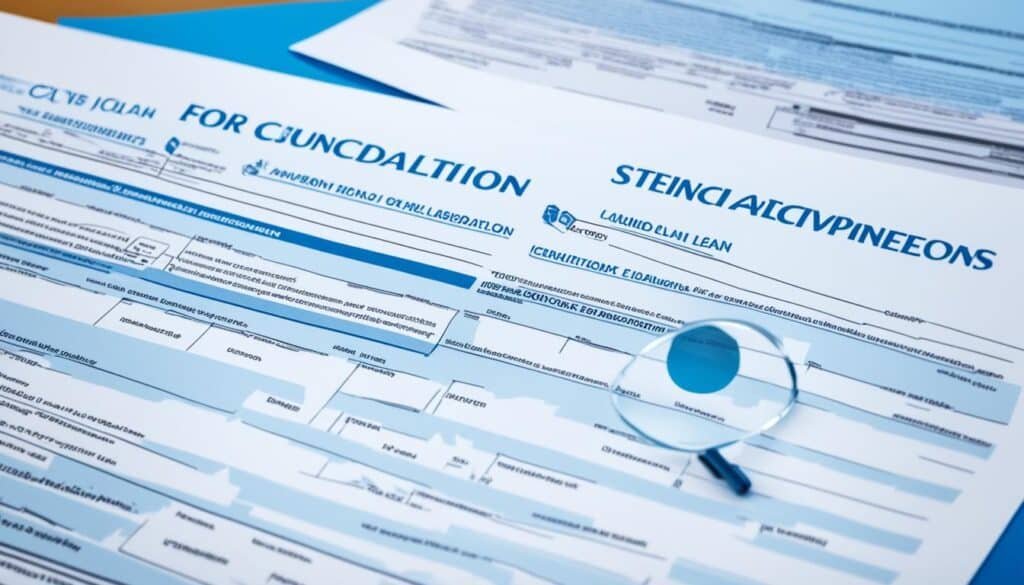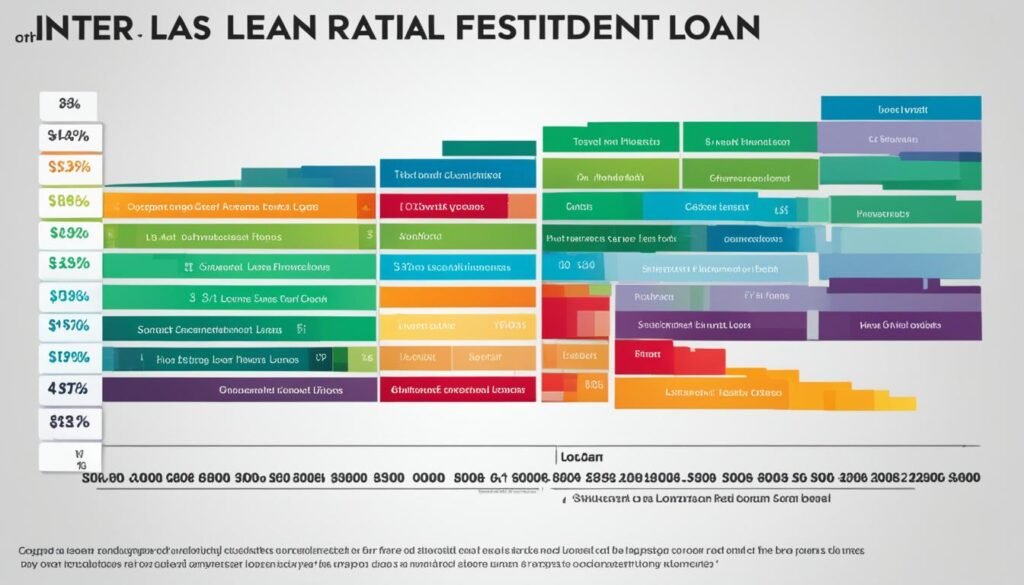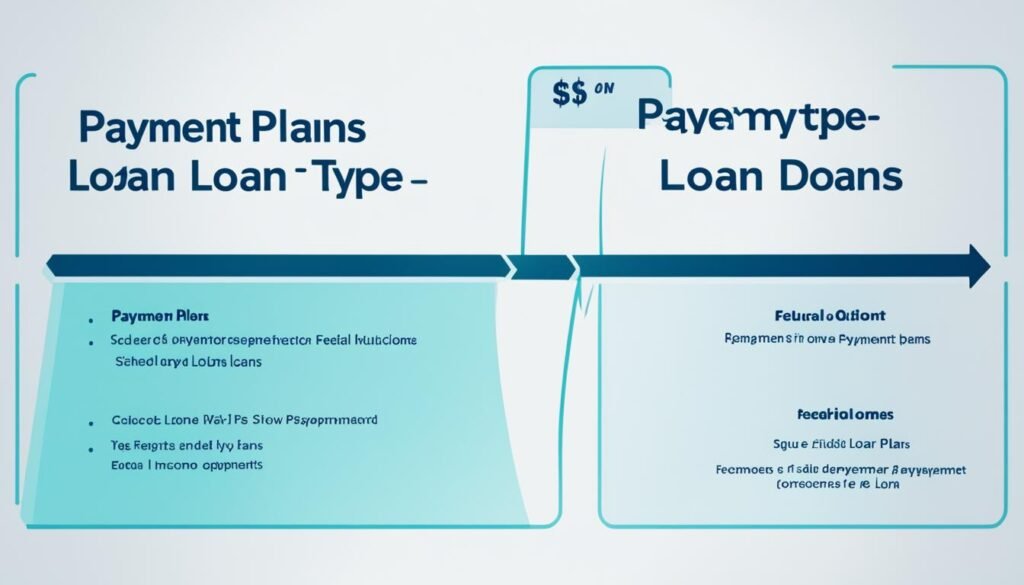For students looking to fund their college education, understanding the study loan requirements is crucial. Whether you’re considering federal student loans or private student loans, it’s essential to have a comprehensive guide to help you navigate the process. In this article, we will explore the different study loan requirements, including eligibility criteria, interest rates, and repayment options.
Key Takeaways: Study Loan Requirements
- There are two main types of study loans: federal student loans and private student loans.
- Federal student loans offer advantages like lower interest rates, flexible repayment plans, and opportunities for loan forgiveness.
- Private student loans might have higher interest rates but can offer more flexibility in terms of eligibility.
- Understanding the eligibility requirements for federal student loans is essential, including being a U.S. citizen or eligible noncitizen and maintaining satisfactory academic progress.
- Federal student loans have borrowing limits based on factors such as the borrower’s year of study and dependency status.
Types of Federal Student Loans
Federal student loans are available in several types, each designed to meet the diverse needs of students. Understanding the different types of federal student loans can help borrowers make informed decisions about their education financing.
1. Subsidized Loans
Subsidized loans are one of the most beneficial types of federal student loans as they provide financial assistance based on financial need. The U.S. Department of Education pays the interest on subsidized loans while the borrower is in school, during deferment periods, and for the first six months after leaving school. Eligibility for subsidized loans is determined by the Free Application for Federal Student Aid (FAFSA) and the borrower’s demonstrated financial need.
2. Unsubsidized Loans
Unlike subsidized loans, unsubsidized loans do not require a student to demonstrate financial need. Interest on unsubsidized loans accrues while the borrower is in school, and it is the borrower’s responsibility to repay the interest and the principal amount. These loans are available to both undergraduate and graduate students, and the loan amount depends on the cost of attendance and other financial aid received.
3. PLUS Loans
PLUS loans, which stand for Parent Loan for Undergraduate Students, are federal loans that parents can borrow on behalf of their dependent undergraduate students. These loans are also available to graduate and professional students. PLUS loans have a fixed interest rate and do not require borrowers to demonstrate financial need. However, a credit check is conducted to determine eligibility. The loan amount can cover the remaining cost of attendance after other financial aid is applied.
4. Consolidation Loans
Consolidation loans allow borrowers to combine multiple federal student loans into a single loan, resulting in a single monthly payment. This simplifies the repayment process and can potentially lower the monthly payment amount. Consolidation loans offer flexible repayment plans and may extend the repayment term, but it could result in the borrower paying more interest over time. It’s important to consider the pros and cons before opting for loan consolidation.
Understanding the types of federal student loans is essential for students seeking financial assistance for their education. Whether it’s subsidized loans that provide interest relief or PLUS loans that cater to parent borrowers, exploring each option can help students make well-informed decisions.
Eligibility Requirements for Federal Student Loans

To be eligible for federal student loans, borrowers need to meet specific requirements set by the government. These requirements include:
- Being a U.S. citizen or eligible noncitizen: To qualify for federal student loans, you must be a U.S. citizen, U.S. national, or an eligible noncitizen, such as a permanent resident or refugee.
- Having a valid Social Security number: A valid Social Security number is necessary to apply for federal student loans. It serves as a unique identifier for the borrower.
- Enrolled in an eligible degree or certificate program: Federal student loans are available only for students who are enrolled at least half time in an eligible program offered by an accredited institution. This includes programs at universities, community colleges, and vocational schools.
- Maintaining satisfactory academic progress: To remain eligible for federal student loans, you must maintain satisfactory academic progress as defined by your institution. This typically means meeting minimum GPA requirements and successfully completing a certain number of credits each semester.
- Show no default on existing federal student loans: If you have previously received federal student loans, you must be current on your loan payments and not be in default to qualify for additional federal loans.
Meeting these eligibility requirements ensures that federal student loans are provided to deserving students who demonstrate a commitment to their education and have the financial need to support their studies.
Borrowing Limits for Federal Student Loans

When considering federal student loans, it’s important to understand the borrowing limits that are in place. These limits determine the maximum amount of money that can be borrowed to fund your education. The borrowing limits vary depending on several factors, including your year of study, dependency status, and other considerations.
For undergraduate students, the borrowing limits are typically divided into two categories: annual limits and aggregate limit. Annual limits specify the maximum amount that can be borrowed in a single academic year, while the aggregate limit sets the total amount of federal loans you can receive throughout your college career.
The specific borrowing limits for undergraduate students depend on your year of study. For example, first-year undergraduate students may have lower borrowing limits compared to those in their later years. These limits encompass both subsidized and unsubsidized loans, giving you the opportunity to borrow the necessary funds to cover your educational expenses.
Graduate students also have specific borrowing limits for their federal student loans. Graduate students, unlike undergraduate students, are considered independent, which means they have different limits applicable to their specific educational level. The borrowing limits for graduate students are typically higher compared to those for undergraduate students, enabling them to finance their advanced degrees.
It’s important to note that the borrowing limits for federal student loans are subject to change and are influenced by federal regulations. Therefore, it’s crucial to consult the official sources, such as the U.S. Department of Education, to stay informed about the current borrowing limits for federal student loans.
Summary of Borrowing Limits for Federal Student Loans
| Student Classification | Annual Limit | Aggregate Limit |
|---|---|---|
| First-Year Undergraduate Students | $5,500 to $9,500* | $31,000 |
| Second-Year Undergraduate Students | $6,500 to $10,500* | $31,000 |
| Third-Year and Beyond Undergraduate Students | $7,500 to $12,500* | $57,500 |
| Graduate Students | $20,500 for unsubsidized loans | $138,500 |
*The borrowing limits for subsidized and unsubsidized loans may vary depending on financial need and other factors.
Understanding the borrowing limits for federal student loans is essential for planning your educational financing. By being aware of these limits, you can make informed decisions about the amount of money you need to borrow and explore additional funding options if necessary. Remember to stay updated on any changes to borrowing limits and consult official sources for the most accurate and current information.
Interest Rates on Federal Student Loans

Federal student loans have fixed interest rates that are set by the Department of Education. The interest rates differ depending on the type of loan. For example, subsidized and unsubsidized loans for undergraduate students have the same interest rate, while parent PLUS loans and grad PLUS loans have a higher interest rate.
Understanding the interest rates associated with federal student loans is important as it impacts the total amount repaid over time. Let’s take a closer look at the interest rates for each type of loan:
| Type of Loan | Interest Rate |
|---|---|
| Subsidized Loans | 3.73% (Undergraduate) |
| Unsubsidized Loans | 3.73% (Undergraduate) |
| Parent PLUS Loans | 6.28% |
| Grad PLUS Loans | 6.28% |
As you can see, undergraduate students who receive subsidized or unsubsidized loans will have the same interest rate. However, parent PLUS loans and grad PLUS loans have a higher interest rate compared to undergraduate loans.
It’s important to keep in mind that these rates are determined by the Department of Education and are fixed for the life of the loan. This means that the interest rate will not change over time, allowing borrowers to plan and budget accordingly.
Understanding Subsidized and Unsubsidized Loans
Before we dive deeper into interest rates, it’s important to understand the difference between subsidized and unsubsidized loans. Subsidized loans are available to undergraduate students with demonstrated financial need, and the government covers the interest while the borrower is in school. Unsubsidized loans, on the other hand, are available to both undergraduate and graduate students, but interest starts accruing as soon as the loan is disbursed.
“The interest rates for federal student loans are set by the Department of Education and remain fixed for the life of the loan. Understanding these rates is crucial for borrowers to estimate their total repayment amount.”
Choosing the Right Loan for You
When considering federal student loans, it’s essential to evaluate your own financial situation and priorities. Subsidized loans may be more advantageous for undergraduate students with demonstrated financial need, as the government covers the interest while you’re in school. However, if you’re ineligible for subsidized loans or need additional funds, unsubsidized loans can still be a viable option.
For parents and graduate students, parent PLUS loans and grad PLUS loans may be necessary to cover the cost of education. While these loans have higher interest rates, they can still provide the funding needed to pursue higher education.
Ultimately, it’s crucial to carefully consider your options and understand the impact of interest rates on the total amount repaid. This will allow you to make an informed decision and choose the loan that best suits your financial goals and circumstances.
Repayment Options for Federal Student Loans

Federal student loans offer a range of repayment options to accommodate borrowers’ unique financial situations. Whether you’re just starting your career or experiencing financial hardship, there are plans available to help make your loan payments more manageable.
Income-Driven Repayment Plans:
Income-Driven Repayment plans adjust your monthly payments based on your income and family size. These plans can be a good option if you expect your income to be lower in the early years of repayment, or if you work in a lower-paying job. Two popular Income-Driven Repayment plans are:
- Income-Based Repayment (IBR)
- Pay As You Earn (PAYE)
Under the Income-Based Repayment (IBR) plan, your monthly payments are limited to a percentage of your income, typically 10-15%. After 20 or 25 years of qualifying payments, any remaining balance on your federal student loans may be forgiven.
The Pay As You Earn (PAYE) plan is similar to IBR but typically requires a lower percentage of your income for monthly payments. Additionally, the PAYE plan forgives any remaining balance on your loans after 20 years of qualifying payments.
Standard Repayment Plan:
The Standard Repayment Plan is a basic plan with fixed monthly payments over a set period of time, usually 10 years. This plan is ideal if you can afford higher monthly payments and want to pay off your loans as quickly as possible.
Extended Repayment Plan:
The Extended Repayment Plan extends the repayment period to up to 25 years, resulting in lower monthly payments. However, keep in mind that the longer repayment term means you may end up paying more in interest over time.
Aside from these repayment options, there are also loan forgiveness programs available for borrowers who meet specific criteria. These programs offer partial or complete forgiveness of your federal student loans in exchange for working in certain professions or meeting other requirements.
Important note: It’s essential to carefully consider the pros and cons of each repayment option and understand how they may impact your long-term financial goals. You can explore these options further by contacting your loan servicer or visiting the Federal Student Aid website for more information.
Comparing Federal Student Loan Repayment Options
| Repayment Option | Monthly Payments | Repayment Period | Eligibility | Loan Forgiveness |
|---|---|---|---|---|
| Income-Driven Repayment | Based on income | 20-25 years | Not limited to specific professions | After 20 or 25 years of qualifying payments |
| Standard Repayment | Fixed | 10 years | Not limited to specific professions | No forgiveness |
| Extended Repayment | Lower than Standard Repayment | 25 years | Not limited to specific professions | No forgiveness |
Private Student Loans: an Alternative to Federal Loans

When it comes to financing your college education, federal student loans are not the only option available. Private student loans offer an alternative solution that can be obtained from private lenders such as banks, credit unions, and online lenders. These loans can provide the necessary funds to cover tuition fees, room and board, and other education-related expenses.
Unlike federal loans, the eligibility requirements and interest rates for private student loans vary between lenders. Rather than relying solely on factors like the borrower’s academic history or financial need, private lenders often consider additional criteria such as the borrower’s credit history, income, and employment status.
While private student loans may have higher interest rates compared to federal loans, they can offer more flexibility in terms of loan amounts and repayment options. Borrowers have the freedom to choose from various repayment plans that suit their financial situation and goals.
It’s important for students and their families to carefully consider the benefits and drawbacks of private student loans before making a decision. Here are some key points to keep in mind:
- Borrowing Limits: Private student loans may have different borrowing limits compared to federal loans. Depending on the lender, students may be able to borrow the full cost of education or a specific amount determined by the lender.
- Interest Rates: Private student loans typically have higher interest rates than federal loans. It’s important to carefully review the interest rates offered by different lenders and calculate the total cost of repayment over the loan term.
- Repayment Options: Private lenders may offer various repayment options, including immediate repayment, interest-only payments while in school, or deferred payments until after graduation. Borrowers should consider their financial situation and future earning potential when selecting a repayment plan.
- Borrowing from Private Lenders: Private student loans are borrowed directly from private lenders rather than the government. This means that the loan terms, conditions, and customer service may vary depending on the lender.
Before applying for private student loans, it’s crucial to compare offers from different lenders to ensure you secure the most favorable terms and rates. Taking the time to carefully evaluate your financial needs and explore all available options can help you make an informed decision that aligns with your long-term goals.
“Private student loans can be a valuable tool for funding your education when federal student loans are not enough. However, it’s important to do your research and compare offers from different lenders to ensure you get the best deal.”
Comparing Private and Federal Student Loans
| Aspects | Private Student Loans | Federal Student Loans |
|---|---|---|
| Eligibility | Varies between lenders and may consider credit history, income, and other factors. | Based on need and does not consider credit history or income. |
| Interest Rates | Higher interest rates compared to federal loans. | Lower interest rates set by the Department of Education. |
| Repayment Options | Flexible repayment plans offered by individual lenders. | Various income-driven and fixed repayment plans available. |
| Borrowing Amount | Determined by the lender and may cover the full cost of education. | Annual and aggregate limits set by the Department of Education. |
| Loan Forgiveness | Not eligible for federal loan forgiveness programs. | Eligible for various loan forgiveness and repayment assistance programs. |
It’s important for borrowers to carefully evaluate their options and consider their individual financial circumstances before selecting the type of student loan. Private student loans can provide the necessary funds to pursue higher education, but it’s crucial to be mindful of the associated interest rates and repayment plans.
Loan Repayment Considerations
When it comes to repaying your student loans, there are several important considerations to keep in mind. These include interest rates, monthly payments, loan forgiveness options, and refinancing opportunities. By understanding these factors, you can make informed decisions that will help you manage your loans effectively.
Interest Rates: Federal Loans vs. Private Loans
One of the key factors to consider is the interest rates associated with your loans. Federal loans generally offer more favorable interest rates compared to private loans. The interest rates for federal loans are set by the Department of Education and are typically fixed throughout the repayment period. On the other hand, private loans may have variable interest rates that can fluctuate over time, depending on market conditions and your creditworthiness.
By choosing federal loans, you can take advantage of lower interest rates, which can result in significant savings over the life of your loan. This can make a big difference in the total amount you repay.
Monthly Payments: Federal Loans vs. Private Loans
Another important consideration is the monthly payments you’ll need to make. Monthly payments for federal loans are generally more flexible and can be adjusted based on your income through income-driven repayment plans. These plans calculate your monthly payments based on a percentage of your discretionary income, making them more manageable, especially during periods of lower income.
Private loans, on the other hand, may have fixed monthly payments that can be higher than those of federal loans. It’s important to carefully consider your budget and income potential when deciding on the appropriate monthly payment amount.
Loan Forgiveness: Federal Loans
Loan forgiveness is a significant benefit offered by federal loans. Depending on your career choice or other qualifying criteria, you may be eligible for loan forgiveness programs. These programs can eliminate a portion or even all of your remaining federal loan balance after a certain number of qualifying payments.
Private loans typically do not offer loan forgiveness options, so if this is an important consideration for you, federal loans are generally the better choice.
Refinancing: Private Loan Option
If you have existing private loans, refinancing could be an option to consider after graduation. Refinancing involves obtaining a new loan from a private lender to pay off your existing loans. This can help you secure a potentially lower interest rate and more manageable monthly payments.
However, it’s important to carefully evaluate the terms of the refinanced loan. You should consider any benefits or protections you may be giving up by refinancing federal loans into private loans, such as loan forgiveness options and flexible repayment plans.
“Understanding the different repayment considerations for federal and private loans is crucial for effectively managing your student loan debt.” – Financial Advisor
| Considerations | Federal Loans | Private Loans |
|---|---|---|
| Interest Rates | Lower and fixed | Higher and may vary |
| Monthly Payments | Flexible and income-driven | Higher and fixed |
| Loan Forgiveness | Available for certain professions | Not typically available |
| Refinancing Option | Not applicable | Potential for lower rates |
Ultimately, it’s important to carefully weigh the benefits and drawbacks of federal and private loans, considering factors such as interest rates, monthly payments, loan forgiveness options, and refinancing potential. By understanding your options and creating a plan for loan repayment, you can make informed decisions that will help you successfully manage your student debt.
Tips for Managing Student Loans

Managing student loans effectively involves several strategies. By implementing these tips, you can stay on top of your loan repayment and make informed financial decisions.
1. Track Your Borrowing
It’s important to keep a record of your borrowing and understand the total amount owed. Maintain a spreadsheet or use a budgeting app to track each loan, including the principal balance, interest rates, and repayment status. By having a clear overview of your loans, you can make informed decisions about repayment strategies and prioritize your payments.
2. Pay Interest While in School
If possible, consider paying the interest on your loans while you’re still in school. Even making small payments towards the interest can help reduce the overall loan balance. By tackling the interest early, you can minimize the accrual of interest capitalization, which can save you money in the long run.
3. Stay in Touch with Your Loan Servicer
It’s essential to maintain regular communication with your loan servicer throughout your repayment journey. Keep them updated on any changes in your personal information or financial circumstances, such as changes in address, email, phone number, or income. Your loan servicer can provide valuable guidance, answer any questions you may have, and help you navigate the repayment process smoothly.
4. Create a Long-Term Financial Plan
Developing a long-term financial plan is crucial for effectively managing your student loans. Take the time to evaluate your financial goals, prioritize your expenses, and establish a budget that accommodates your loan repayments. Consider working with a financial planner or utilizing online resources to assist you in creating a personalized plan that aligns with your financial aspirations.
5. Explore Repayment Options
Be aware of the various repayment options available for your student loans. Federal loans offer options such as income-driven repayment plans, which adjust your monthly payments based on your income and family size. Private loans may have different repayment options, such as interest-only payments during the grace period. Research and understand the pros and cons of each repayment option to choose the one that best fits your financial situation.
By implementing these tips, you can take control of your student loans and ensure a smooth repayment process. Remember, managing your loans effectively requires proactive financial planning, regular communication, and staying informed about your loan terms and options.
How to assess your financial need
Assessing your financial needs involves a systematic approach to understand your expenses, income, and financial goals. Start by creating a detailed budget outlining all sources of income and expenses. Identify essential expenses such as housing, utilities, and groceries, along with discretionary spending like entertainment and dining out. Consider your short-term and long-term financial goals, such as saving for emergencies, retirement, or education. Evaluate your current financial situation, including debts and savings. Regularly review and adjust your budget as circumstances change. Seeking professional advice from financial planners or advisors can provide valuable insights tailored to your specific needs.
Best Private Student Loans
Determining the best private student loans depends on various factors including interest rates, repayment terms, and borrower benefits. Some notable lenders offering competitive options include Sallie Mae, Discover Student Loans, and Wells Fargo. These lenders often provide flexible repayment options, competitive interest rates, and may offer borrower benefits like interest rate reductions for automatic payments or cosigner release options. However, it’s crucial to thoroughly research and compare offers from multiple lenders to find the best fit for your individual financial situation and academic pursuits. Additionally, considering factors like customer service and loan repayment assistance programs can also inform your decision.
Education Loan Finance Private Student Loan
Education Loan Finance (ELFI) offers private student loans designed to meet the needs of students pursuing higher education. ELFI provides competitive interest rates, flexible repayment options, and no application fees or prepayment penalties. Borrowers can choose from various repayment terms to suit their financial situation, and may be eligible for discounts on interest rates through autopay. Additionally, ELFI offers refinancing options for both private and federal student loans, allowing borrowers to potentially lower their interest rates and simplify their repayment process. Overall, ELFI’s private student loans provide a valuable option for financing education expenses.
Private student loan eligibility requirements
Private student loan eligibility typically requires applicants to be enrolled in an eligible educational institution, often at least half-time. Most lenders require borrowers to be U.S. citizens or permanent residents, although some may offer loans to international students with a creditworthy cosigner. Applicants must also demonstrate a good credit history or have a cosigner with strong credit. Income and employment history may be considered, especially for borrowers without a cosigner. Additionally, lenders may have age and residency requirements. Meeting these criteria, along with providing necessary documentation, can increase the likelihood of approval for a private student loan.
Also Read: What is Prodigy Refinance Student Loan?
Conclusion
Understanding the study loan requirements is essential for students seeking to finance their college education. Both federal student loans and private student loans offer advantages and options for borrowers. Federal student loans provide lower interest rates and flexible repayment plans, while private student loans offer alternative financing solutions. By carefully considering eligibility requirements, interest rates, and repayment options, students can make informed decisions about their study loans and create a financial plan that aligns with their long-term goals.
When exploring study loan options, it is crucial to evaluate both federal and private loan offerings. Federal student loans have benefits such as fixed interest rates and income-driven repayment plans, providing borrowers with more favorable terms. However, private loans can offer more flexibility and tailor-made solutions that meet individual financial needs.
To navigate the loan repayment journey successfully, borrowers should consider their financial planning. Having a clear plan in place, including ways to effectively manage loan repayments, can make a significant difference in long-term financial stability. Additionally, keeping track of borrowing, paying interest while in school, and staying in touch with loan servicers are key strategies for managing student loans responsibly.
FAQs
Q: What are the basic requirements to apply for student loans?
A: To apply for student loans, you typically need to fill out the FAFSA form to determine your eligibility for federal aid. Additionally, private lenders may have their own set of requirements such as a minimum credit score and income requirement.
Q: How can a graduate student apply for a private student loan?
A: Graduate students can apply for a private student loan by submitting an application directly to a private lender. They may need to meet certain credit and income requirements set by the lender.
Q: What is the best way to pay for college?
A: The best way to pay for college is through a combination of sources such as federal and private student loans, scholarships, grants, and personal savings. You can also explore loan forgiveness programs if you qualify.
Q: What are the requirements to qualify for a private student loan?
A: The requirements to qualify for a private student loan may include having a good credit score, meeting income criteria, and potentially applying with a cosigner if necessary.
Q: How do I know if I meet the loan eligibility criteria?
A: Loan eligibility criteria vary between lenders and loan types. To determine if you meet the criteria, you should contact the lender directly or review the requirements stated on their website.
Q: What are the important private student loan requirements to consider?
A: Some important private student loan requirements to consider include credit and income requirements, whether the loan requires a credit check, and if you need a cosigner to apply.
Q: Can international students apply for student loans in the US?
A: Yes, international students studying in the US can apply for private student loans, but they may need a US cosigner to be approved for the loan.




